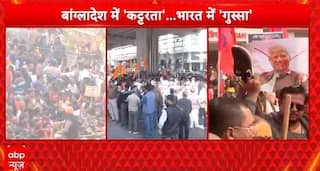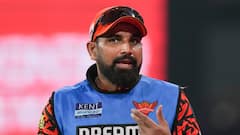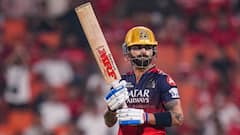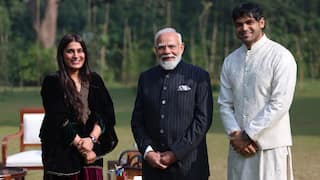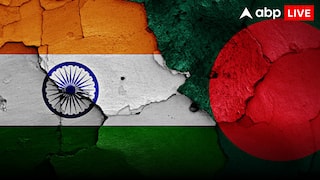IPL 2023: How Per-Ball Cost Of The Mega Event Is Rising, And The Way Forward For BCCI
Only one sports league around the globe beats the IPL in terms of the per match value and that is the USA’s National Football League (NFL).

Yet another edition of the Indian Premier League (IPL) is underway. The Twenty 20 (T20) competition has become a massive phenomenon in the cricketing world and some of the numbers behind it are jaw-dropping, to say the least. The league, for instance, is already the second most valued sporting league on the planet when it comes to the per-match value from media rights.
Only one sports league around the globe beats the IPL in terms of per-match value and that is the North American sports league called National Football League (NFL). However, with the speed of IPL's growth and the ever-growing market of cricket, it wouldn't be a surprise to see the India-based lucrative league come out on top in the coming years.
But what exactly is the mathematics that goes behind making the IPL such a valued entity in itself?
IPL: The Number Story
It is pertinent to note that this is the first time that the tournament's TV and digital streaming rights have been sold separately. Both together for the 2023-27 cycle have fetched the BCCI a staggering Rs 48,336 crore or approximately $6 billion.
While Disney's Star India bagged the TV broadcasting rights for this five-year period much like they had won the rights for the previous cycle, this time around they paid Rs 23,575 crore to get exclusive rights to broadcast the live matches of the IPL through the satellite television.
However, Reliance's Viacom 18 outbid Star India in the digital streaming rights and paid more than what Star bid to get the TV rights. They acquired the digital streaming rights for Rs 23,758 crore. In addition, the streaming rights for international audiences were also sold in a different package and were bagged by Viacom 18 and Times Internet.
If the number of matches in the 2023-27 cycle remains projected to be 410, the per-game value of the tournament will come down to Rs 118 crore. Each match can have a maximum of 40 overs, which means that the per over valuation will be at Rs 2.95 crore and assuming that all 240 balls in a fixture are bowled then the valuation per ball of an IPL game is a little over Rs 49 lakh.
IPL Vs Others: Where It Stands
When compared to the NFL, IPL still stands a distant second. The North American League's per-match valuation is twice IPL's per-game cost. One NFL contest is valued at $36 million, which happens to be more than Rs 295 crore. But when the tournament is placed against some of the other hot properties in the sporting arena- like the English Premier League (EPL), the most-watched football league in the world, or the National Basketball Association (NBA), the exponential increase in IPL's valuation in a short span of time really stands out.
EPL has a per-game value of Rs 92 crore while the NBA is way behind in this aspect at Rs 16 crore per match.
The media rights for the previous five-year cycle (2018-22) of the IPL had fetched Rs 16,347.5 crore. The per-match IPL valuation was then calculated at Rs 55 crore with one ball amounting to Rs 23.3 lakh. At that point in time, the cricket league in terms of its valuation was somewhere between the NBA and the English Premier League, but the latest deal has well and truly cemented the tournament among the most valuable sporting leagues in the world.
IPL: Scope for improvement
What it also means for the organisers is that they ensure that the quality of the tournament lives up to the valuation. One can't afford a washed-out game, for instance, when Rs 118 crore is riding on it. High-quality drainage becomes an absolute necessity, especially in venues where monsoon knocks earlier than others.
There have also been instances of floodlight failure, most recently in match number 2 of IPL 2023 played between the Punjab Kings and Kolkata Knight Riders where the start of the Kolkata Knight Riders’ chase against the home side at the IS Bindra Stadium in Mohali was delayed by almost half an hour due to floodlight malfunction.
Incidents like this, common in several stadiums like the Eden Gardens in Kolkata, become unacceptable especially when the value of the
IPL is growing quicker than NBA and NFL. It also becomes problematic for broadcasters who have bought the rights but now find themselves caught in a tricky situation, especially on doubleheader days when delays like these mean the match may get over well after the second match has already commenced, like what happened on April 1.
The other issue which seems to be plaguing the IPL is the over rate. Somehow, the organisers need to find a way to ensure that the match finishes on time. When the high-scoring fixture between the Chennai Super Kings and Lucknow Super Giants at the Chepauk got over, it was past 11:30 pm. The tournament opener also finished in over four hours even when just 90 minutes are allotted to a team to finish their quota of 20 overs.
Earlier, fines were imposed and in the latest method, for every over bowled after the stipulated time the captain is forced to have an additional fielder inside the 30-yard circle but none of it seems to be working effectively. There is an IPL game scheduled almost every day over an eight-week period and longer-than-promised games do not help but accelerate fan fatigue.
What BCCI Needs To Do
IPL may quickly have to adopt something like the NBA's rule where the players are given a time frame of a 24-second shot clock. Even in Major League Baseball (MLB), they are now allowing just 15 seconds for pitchers to start their motion and with a runner on, they get an additional 5 seconds. In case, the time limit is breached then the umpire can even award a walk for the batters. Similarly, batters also need to be ready within 8 seconds or else it will be counted as a strike.
IPL's measure of an additional fielder is a good move but more stringent measures can be adopted. A penalty of runs or a free hit, something which costs them the game would perhaps act as a better deterrent.
The box which the IPL is ticking, though, is innovation. The league has welcomed new rules which have added to the excitement and ensured that the balance between what is essentially a fight between the bat and ball does not become lopsided.
This year, too, there have been several changes in Playing Conditions the option to review any decision made by the umpire including a wide or a no-ball call (above waist height).
In addition, the Impact Player Rule has also been introduced but while in other leagues there have been limitations as to when that player can be called upon, the IPL has given the franchises the liberty to acquire his services at any time during the match. Moreover, captains have been allowed to exchange their team sheets after the toss, in an attempt to make it a level-playing field for both teams.
Thus, while it's okay to bask in the glory of what the IPL has achieved so far, to remain on top of their game, the BCCI and the organising committee should be in a position to explore possibilities and deliver on the promise of world-class cricketing entertainment.









